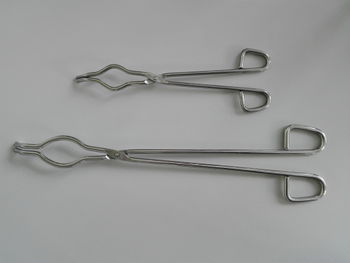Difference between revisions of "Crucible tongs"
From Sciencemadness Wiki
(Created page with "{{Stub}} Two stainless steel crucibles, 200 and 400 mm on length '''Crucible tongs''' are scissor-like tools, with two p...") |
|||
| Line 1: | Line 1: | ||
{{Stub}} | {{Stub}} | ||
| − | [[File:Crucible tongs 200 and 400 mm.jpg|thumb|350px|Two stainless steel crucibles, 200 and 400 mm | + | [[File:Crucible tongs 200 and 400 mm.jpg|thumb|350px|Two stainless steel crucibles, 200 and 400 mm in length]] |
'''Crucible tongs''' are scissor-like tools, with two pincers instead of having two blades, which allow the users to grasp a hot crucible or various flasks. | '''Crucible tongs''' are scissor-like tools, with two pincers instead of having two blades, which allow the users to grasp a hot crucible or various flasks. | ||
Revision as of 15:53, 8 June 2018
 |
This article is a stub. Please help Sciencemadness Wiki by expanding it, adding pictures, and improving existing text.
|
Crucible tongs are scissor-like tools, with two pincers instead of having two blades, which allow the users to grasp a hot crucible or various flasks.
General
Crucible tongs are generally made of stainless steel, or some other steel alloy for special types. They have scissors-like shape, with the "blades" having straight, curved or concave shaped pincers, each designed to hold different shaped flasks. Stainless steel crucible tongs can tolerate temperatures up to 500 °C, which is the average value for the softening point of stainless steel.
Availability
Crucible tongs can be bought from lab suppliers or online.
